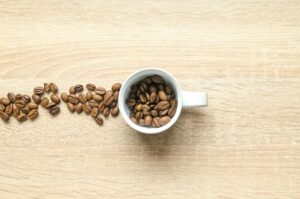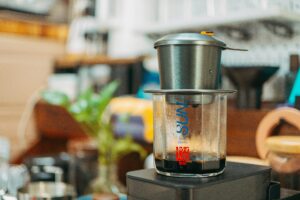Ah, coffee—the beloved elixir that jumpstarts our mornings, fuels our productivity, and comforts us with its rich, aromatic embrace. For many of us, that first sip of coffee in the morning is nothing short of magical. But have you ever stopped to wonder how much a cup of coffee actually costs? Spoiler alert: it’s more than just the price tag at your favorite café. Let’s dive into the intricate world of coffee costs and uncover the real value of that cherished cup.
Table of contents
The Basic Breakdown: From Beans to Brew
At its core, the cost of a cup of coffee starts with the beans. Coffee beans come from various regions around the world, each with its own unique flavor profile and price point. Generally, coffee beans are categorized into two main types: Arabica and Robusta. Arabica beans are known for their superior flavor and are typically more expensive, while Robusta beans are stronger and often cheaper.
The price of coffee beans fluctuates based on several factors, including weather conditions, political stability in coffee-growing regions, and global demand. On average, a pound of coffee beans can range from $5 to $20 or more, depending on the quality and origin.
Home Brew vs. Café: A Cost Comparison
Let’s break down the costs of making coffee at home versus buying it from a café.
Making Coffee at Home
When you brew coffee at home, the costs are more straightforward:
- Coffee Beans: A pound of beans makes about 48 cups of coffee. If you spend $10 on a pound of beans, that’s approximately $0.21 per cup.
- Water and Electricity: These costs are minimal but let’s estimate $0.05 per cup.
- Equipment: Coffee makers can range from $20 for a basic drip machine to over $500 for an espresso machine. Assuming you buy a $100 coffee maker and it lasts you 2 years, that’s about $0.14 per day or $0.07 per cup (if you drink two cups a day).
- Filters, Milk, and Sugar: Let’s add another $0.10 for these extras.
In total, a home-brewed cup of coffee might cost you around $0.43.
1200W Gooseneck Kettle with ±1℉ Temperature Control,Pour Over Electric Kettle

- 2024 Latest Real Time LED Display
- Accurate to 1°F Temperature Control
- Double coating reinforcement Spout Precise Pouring for Coffee
- 1200W Quick &Quiet Heat & 1L Large Capicity & 100% 304 Stainless Steel Kettle Body
Buying Coffee from a Café
The cost of a café coffee includes several factors:
- Ingredients: High-quality beans, milk, and flavorings.
- Labor: Baristas who craft your coffee.
- Overhead: Rent, utilities, equipment, and other operational costs.
On average, a cup of coffee from a café can range from $2 to $5, depending on the type of coffee and the café’s pricing. Specialty drinks like lattes, cappuccinos, and mochas can cost even more.
The Hidden Costs: Environmental and Social Impact
While the monetary cost of coffee is essential, we must also consider the hidden costs associated with coffee production and consumption.
Environmental Impact
Coffee cultivation has significant environmental implications. Deforestation, pesticide use, and water consumption are considerable concerns. Sustainable farming practices, such as shade-grown coffee, organic farming, and fair trade certification, aim to mitigate these impacts but often come at a higher price.
Social Impact
The coffee industry affects millions of farmers and workers worldwide. Fair trade and direct trade models strive to ensure that coffee farmers receive fair compensation for their labor. However, not all coffee on the market adheres to these ethical standards, and cheaper coffee often means lower wages and poorer working conditions for the workers.
The Cost of Convenience
There’s also a convenience factor to consider. Brewing coffee at home takes time and effort, whereas buying coffee from a café is quick and easy. This convenience comes at a premium. The extra dollars spent at a café are often justified by the time saved and the experience of enjoying a professionally made cup.
Quality vs. Quantity: The Gourmet Coffee Experience
For true coffee aficionados, the experience goes beyond just caffeine intake. The quality of the coffee, the brewing method, and even the ambiance of the café can significantly enhance the experience. High-end coffee shops often source rare and exquisite beans, offering a taste experience that justifies the higher price tag.
Saving Money Without Sacrificing Quality
If you’re looking to enjoy great coffee without breaking the bank, here are some tips:
- Buy in Bulk: Purchasing coffee beans in larger quantities can reduce the cost per cup.
- Invest in Equipment: A good coffee maker or grinder can improve the quality of your home brew.
- Learn Brewing Techniques: Mastering methods like pour-over, French press, or AeroPress can elevate your coffee game.
- Explore Local Roasters: Often, local coffee roasters offer fresher and better-quality beans at competitive prices.
Conclusion: Every Cup Tells a Story
So, how much does a cup of coffee cost? It depends on where you get it, how you make it, and the values you prioritize. Whether you’re savoring a homemade brew or indulging in a café’s specialty, remember that each cup of coffee carries a rich tapestry of effort, resources, and impact. Enjoy your coffee mindfully, knowing that its true value extends far beyond its monetary cost.






